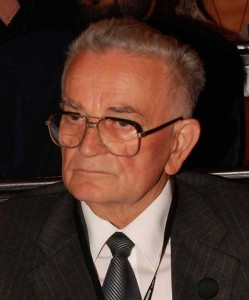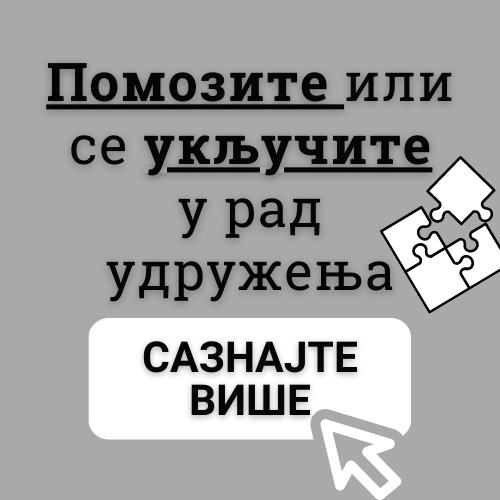
Historical Archive, Karlovac
Jadovno – complex of Croatian Ustasha camps/execution sites 1941
Jadovno is one of the first, of the most brutal and most savage camps/execution sites in Europe. Most of people know some facts about Jasenovac death camp which lasted several years, about Auschwitz, Treblinka, but very few know about the Complex of Ustasha death camps Jadovno 1941. If they say Auschwitz was a factory of death, then in the complex of Jadovno execution sites, death was “dealt by hand, as on a conveyor belt”.
This complex of Jadovno Ustasha camps consisted of Jadovno camp and along with it numerous bottomless pits on Velebit, Gospić camp, camp Ovčara near Gospić, a camp near Risova Glava, camp/execution site Slana, camp/execution site Metajna on the island of Pag, camp/execution site Stupačinovo near Baške Oštarije and a collection point for victims at Gospić railway station. They were formed by state authorities, Gospić County police administration in April 1941, headed by Ustasha emigrant Jurica Frković with the help of a part of Catholic clergy and the cooperation of the state, military and police authorities who delivered, from all over the Independent State of Croatia, Serbs and Jews, Croats and other antifascists, men, women and children to be destroyed.
This complex of camps/executions sites Jadovno, already on the second day of the NDH’s existence, on 11 April 1941, before there was any resistance to this Nazi creation, is a beginning of carefully planned and conducted crime – genocide over the Serbian people and the Holocaust of the Jews. The Ustashas and their leader Ante Pavelić wanted to create a pure Catholic state without the third of its population, i.e. without the Serbs. This fitted well into Hitler’s plan. Thousands and thousands of Serbian victims were an extension of the Holocaust.
The Ustashas are well-known for their unimaginable and incomprehensible cruelties without precedent in modern history. As I was for years studying and researching original archival documents of various origin on this death camp, which lasted for a very short time, from 11 April to 21 August 1941, and in which 40,123 people were murdered in unbelievable ways incomprehensible to a normal human mind (38,110 Serbs, 1,998 Jews, 88 Croats, 11 Slovenians, 9 Muslims, 2 Hungarians, 2 Checks, 1 Russian, 1 Romany and 1 Montenegrin), it was not hard for me to conclude that the Ustashas in their sadism and cruelty surpassed the Nazis in the Holocaust and the Young Turks in the genocide over Armenians. They tortured and murdered with pleasure and slaughtered with knives members of their own biological species.
The victims were mostly Serbs and Jews brought from all over the NDH and the camps were just a short stop to the execution sites. Those were located near bottomless pits of Velebit over which victims were hit on the back of their heads with mallets, slaughtered with knives, thrown alive or barely alive headlong into the abysses of Velebit and thrown into the depths of the sea with rocks tied to their bodies.
Both German Nazis and Italian Fascists were shocked by the cruelty of the Ustasha savagery. They were appalled by Ustashas’ blood thirst. And for a reason, because there were no such crimes in the whole of Europe during the Second World War. German head of defence in Zagreb Arthur Heffner informed Berlin on 24 April 1942 on terrible Ustasha crimes over Serbs (and their property), over people who had been living there from the ancient times. He writes that he could not believe that most of the priests of the Catholic Church were heading this Ustasha crime. He quotes Sarajevo Archbishop Šarić who writes in a Catholic newspaper in 11 May 1941: “I visited our Ustashas in North America. I sang with all my heart our Ustasha hymns with tears in my eyes. We have always given loyalty and fealty to Homeland. More Croats! More Catholics! God and Croats!”, also stating that he was an Ustasha. Heffner mentions Franciscan monk Francetić who ordered a primary school teacher to separate Serbian Orthodox children from the rest, and then Ustashas murdered them in front of their teacher and schoolmates (St. Anthony’s Herald, issue 7-8, pg. 80, 81, 1941). He also mentions several other Catholic priests with criminal intentions who gave instructions on how to cleanse the NDH from Serbs, Jews and Romas.
The truth about the Complex of Croatian Ustasha Camps Jadovno has been supressed, avoided and silenced. Evidence of the crime was being destroyed as soon as the crime was being committed and after, and humble memorial sites were destroyed in 1990–1995. The victims took the truth about the cruelty of Ustasha crimes with them into the bottomless pits and abysses and their voice of horror echoed helplessly for days from the pits of rugged Velebit, executions sites on the island of Pag and waves of the Adriatic Sea. Until today, nobody has exhumed them, counted them or gave them a decent burial. People used to say “this should not be done for the sake of brotherhood and unity, let their bones rest in peace where they are” – uncovered, uncounted, forgotten in the darkness of Velebit’s abysses and precipices.
Тhe thing created and legally organised by the Independent State of Croatia from 1941 to 1945 surpasses with its monstrosity and inhuman urges towards captive Serbs, Jews and Romany the animal cruelty of actions taken in death camps of the Third Reich.


